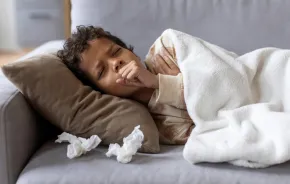
Pacific Northwest locals live for our short but spectacular summers. But when temperatures rise, so do safety risks for kids. According to the National Safety Council, preventable accidental deaths peak during summer, caused by drowning, car accidents, fires and other dangers. It’s also a time when nonfatal injuries from things such as barbecue grills, fireworks and sunburn are more likely. Here’s how to prioritize simple safeguards that keep kids safer all summer long.
Drowning
No parent wants to think about it, but drowning dangers consistently top the Centers for Disease Control and Prevention’s list of unintentional injury deaths for children. It’s the most common cause of accidental death for children ages 1–4 and is in the top five for older children and teens.
According to research, regular swimming lessons can offer a boost to kids’ physical and even cognitive development and offer parents some peace of mind, but even strong swimmers aren’t safe from drowning. Although a small study found that formal swimming lessons can reduce drowning risk in children ages 1–4, the American Academy of Pediatrics (AAP) warns that preschool-age children don’t have the motor skills needed for true independent swimming and should never be considered safe in the water. (See new guidelines to increase family knowledge of water safety.)
Kelsey Ashe of Clyde Hill, a mom of three who works in health care, safeguards her family’s pool with door alarms, strict rules about adult supervision, age-appropriate life jackets for the kids and guests, and a secure 300-pound-capacity pool cover that stays on year-round except when the family swims together. “If anyone falls onto the pool, the cover will prevent them from sinking in, and that probably gives me more peace of mind than anything,” she says.
Wheels
Steer clear of the summer spike in auto-related dangers to kids by following the rules of the road that safeguard against potentially deadly heatstroke. Check out your local car seat laws and keep children in recommended seats as long as possible; never mix alcohol and driving; and keep your phone in a place where it won’t distract you during car trips.
Kids’ smaller bodies heat up three to five times faster than adults, and they can experience heatstroke within minutes in a hot car. The ACT campaign from Safe Kids Worldwide encourages parents to Avoid heatstroke by never leaving a child in a car unattended even for a minute; Create reminders, such as placing something you’ll need — like your work bag or phone — near a child’s car seat; and Take action by calling 911 if you see a child left unattended in a car.
Burns
Our longer summer days mean more sunlight and a higher risk of sunburn. Kids can sunburn in as little as 15 minutes, and a blistering burn is a serious condition requiring emergency medical care, says Amit Joshi, M.D., an internal medicine physician with Overlake Clinics – Issaquah.
The American Academy of Dermatology recommends applying a water-resistant sunscreen with SPF 30 or higher on all exposed skin (even lips) 15 minutes before going outside, and reapplying every two hours or after sweating or swimming. The Academy of Pediatrics doesn’t recommend sunscreens for babies younger than 6 months, so keep little ones in the shade and choose sun-protective (UPF) hats and clothing instead. Seeking cover during peak sunlight hours, from 10 a.m. to 4 p.m., lowers the risk of sunburn and keeps everyone cooler and more comfortable.
The sun isn’t our only source of heat — don’t forget about burns from barbecue grills and campfires. The U.S. Fire Administration recommends designating a 3-foot safety zone around grills and open flames. When burns happen, run them under cool water for three to five minutes, and seek medical help for any burn larger than the palm of your hand. (Before lighting an open flame, remember to check the status of statewide burn bans.)
Bites
Summer’s outdoor adventures can bring on bites of all kinds. Parents can protect kids from insect bites by removing standing water around their home (e.g., buckets, birdbaths and baby pools) and dressing kids in long sleeves and pants for hikes, says Dr. Joshi. “Even if children don’t have known allergies to bites, parents should be able to recognize the signs of an anaphylactic reaction, such as swelling of lips, face, eyes, hands and feet — any facial swelling or wheezing means kids should get medical care. Minor swelling and irritation can probably be treated with an over-the-counter antihistamine.”
Don’t forget bites from four-legged friends, either — each year, over half of the country’s 4.7 million reported dog bites happen to kids younger than the age of 14. Teach kids to never approach an unfamiliar dog, to always ask a dog’s owner if petting is okay (and allow the dog to sniff their hand first), and to never run toward or away from a dog. Instruct kids that if they are ever attacked or knocked down by a dog, they should roll into a ball, cover their face and lie still.
Air
Last summer, Seattle’s air quality was some of the worst in the country, and the American Lung Association’s “State of the Air” 2019 report listed the Seattle-Tacoma area as the country’s ninth most polluted. That’s bad news for us all, but especially for children, whose developing lungs are at risk when smoke and smog linger, says Joshi. “Our poor air quality has definitely impacted the pediatric population. When air quality is poor, there’s a buildup of abnormal gases and pollutants that can trigger asthma or allergies in children.”
Smoky air is especially hard on babies and kids younger than 5, he says. “Lung development is still ongoing up to the age of 5, and exposure to airborne pollutants can actually damage the lungs’ normal, healthy development.” During summer’s smoky season, follow Puget Sound Clean Air Agency’s air quality recommendations for “sensitive groups,” avoid vigorous exercise outdoors, and plan outings for beaches and waterways, where winds may help keep some smoke away.
As soon as the air clears, head back outside to enjoy our fleeting summer, safely.











